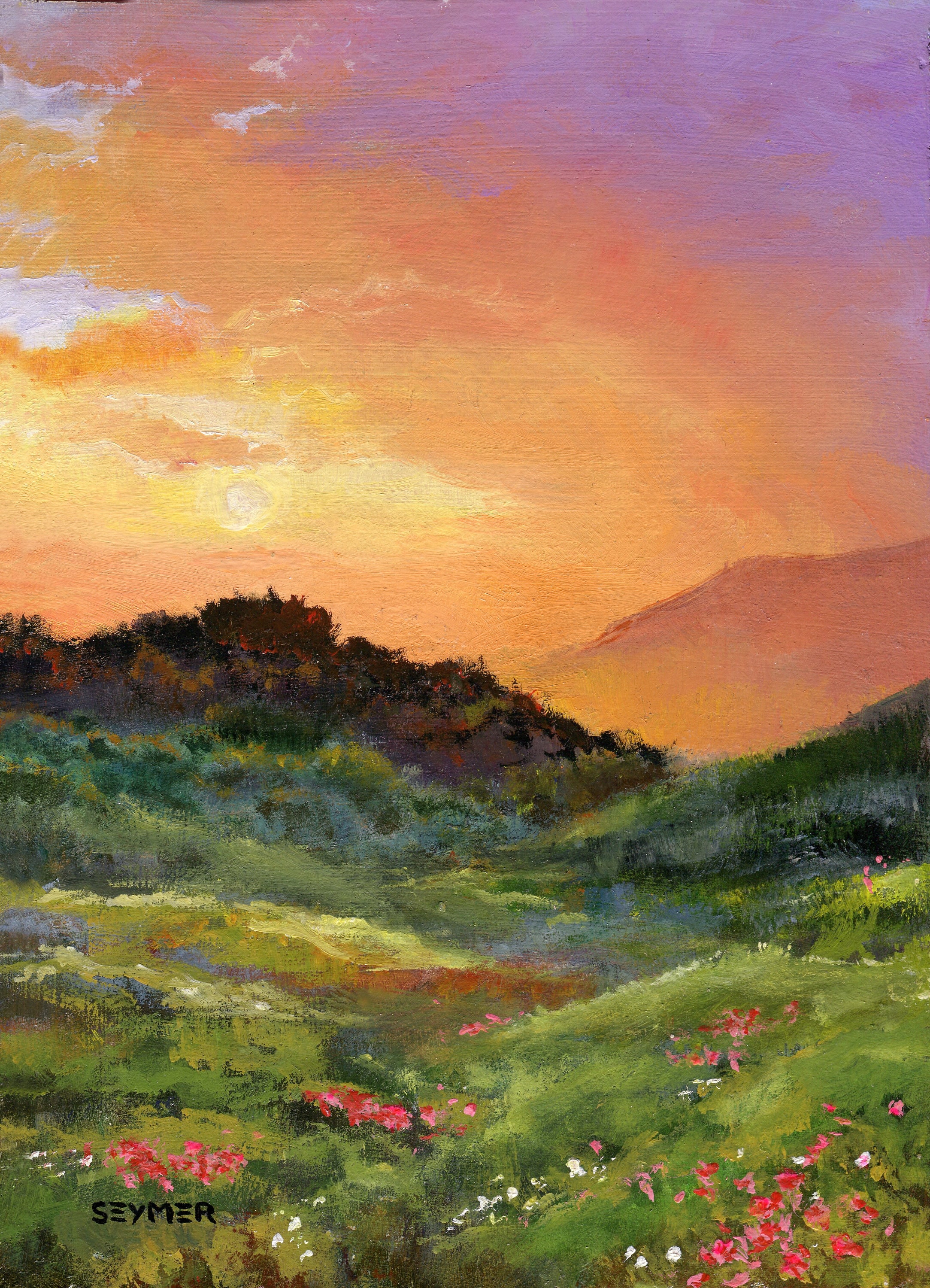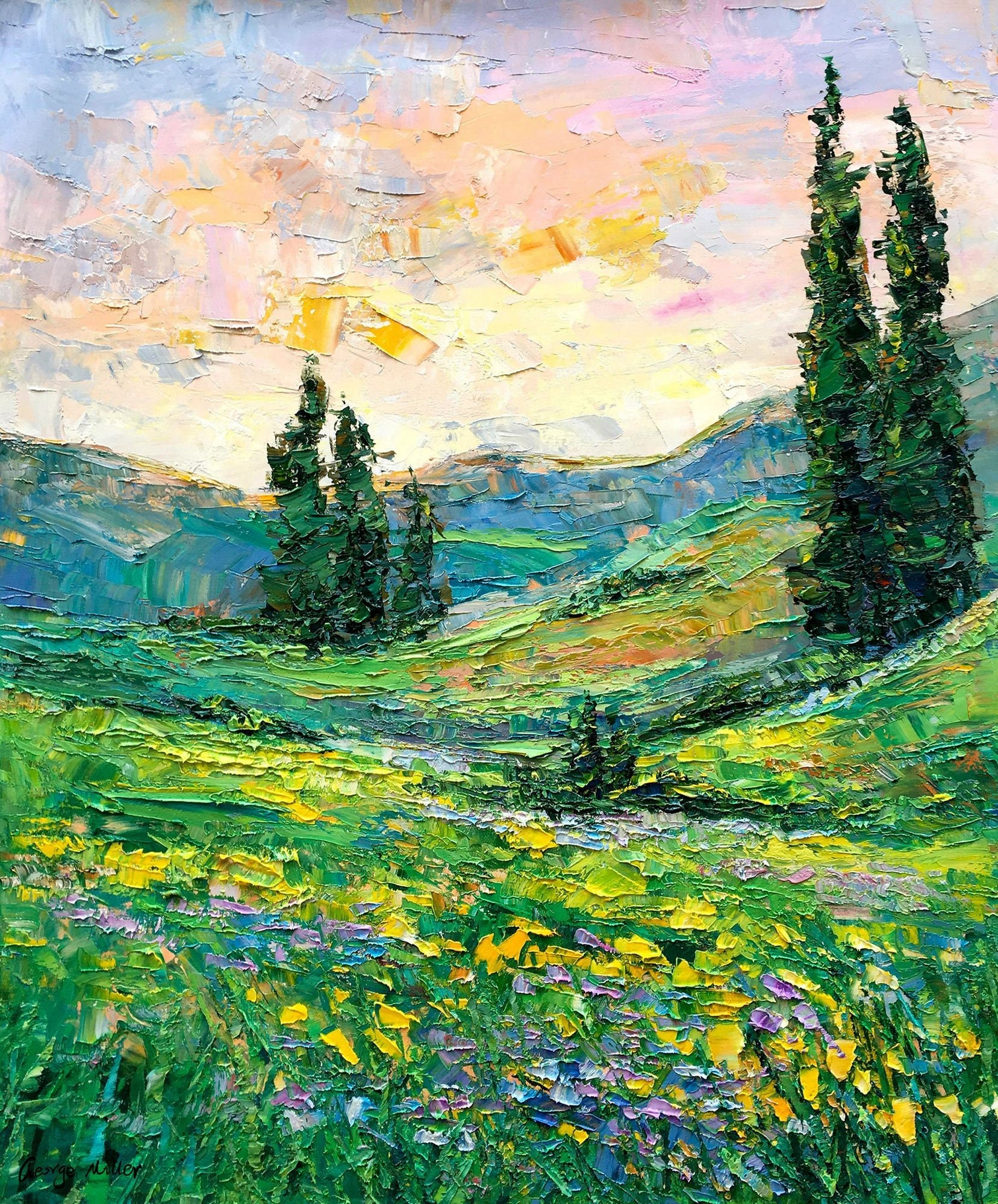Newly Curated Inventory of Oil Paintings for Sale
Newly Curated Inventory of Oil Paintings for Sale
Blog Article
Checking out All About Oil Paintings: A Guide to Comprehending Their Appeal and Value
Oil paintings have mesmerized target markets for centuries, supplying a peek right into the imaginative proficiency of different ages. Their rich history is intertwined with innovative methods and extensive emotional expression. Understanding the products and approaches behind these art work can enhance gratitude. In addition, the market for oil paints provides opportunities for collection agencies and financiers alike. As one discovers this interesting globe, the question occurs: what makes an oil paint genuinely useful?
The Background of Oil Painting: A Trip With Time
Oil painting has origins that date back to ancient times, it absolutely grew during the Renaissance, when musicians found its versatility and abundant shade possibility. Early examples can be traced to the 7th century, with techniques progressing significantly across cultures. The medium became prominent in Northern Europe in the 15th century, specifically through the jobs of artists like Jan van Eyck, who pioneered its use for detailed realistic look and dynamic shades. This duration noted a departure from tempera paints, enabling higher deepness and structure. As oil paint spread, it influenced plenty of artists, bring about masterpieces by prominent figures such as Leonardo da Vinci and Rembrandt. The medium's tradition proceeds, forming the art world well right into modern times.
Recognizing Oil Repaints: Materials and Techniques
As musicians explore the world of oil paints, they run into a diverse variety of products and techniques that define this medium. The main components of oil paint consist of pigments, which offer shade, and drying oils, such as linseed, that bind the pigments and help with application. Numerous ingredients can change the paint's texture and drying time, boosting adaptability. Strategies like glazing, where transparent layers are developed up, and impasto, which entails using thick paint, permit different aesthetic results. In addition, the use of brushes, palette knives, and even fingers can produce special textures and surfaces. Understanding these materials and methods allows artists to completely reveal their creativity and accomplish the preferred effect in their artwork.
The Function of Color in Oil Paints
Color plays a pivotal function in oil paints, influencing both visual appeal and emotional vibration. Comprehending shade concept fundamentals, including the relationships in between shades, can improve an artist's ability to share state of mind and environment. Furthermore, mastering shade mixing techniques permits greater deepness and richness in a paint's scheme.

Color Theory Fundamentals
Comprehending color theory is important for musicians dealing with oil paints, as it develops the foundation for developing visually engaging and harmonious compositions. Shade theory includes the research of how shades interact, the shade wheel, and the connections between key, additional, and tertiary colors. Musicians use complementary shades to improve contrasts and develop centerpieces, while comparable shades advertise unity and cohesiveness within a piece. Furthermore, the principles of great and cozy colors influence the assumption of deepness and area in a painting. Grasping these concepts permits artists to adjust color effectively, assisting the audience's eye and connecting their designated message. Proficiency of color theory inevitably enhances a musician's ability to share emotions and concepts with their work.
Psychological Impact of Shade
The psychological influence of color in oil paints plays an important duty in exactly how visitors perceive and attach with art work. Colors evoke specific sensations and state of minds, influencing the customer's mood. For instance, cozy shades like oranges and reds can develop a sense of warmth and power, while cool tones such as blues and eco-friendlies often evoke calmness or self-contemplation. Artists tactically pick shade combinations to enhance narrative components, guiding the audience's psychological trip. The saturation and contrast of colors better amplify these impacts, drawing interest and creating focus. Inevitably, the interplay of colors in oil paintings not just boosts their aesthetic appeal but likewise works as a powerful medium for psychological expression, improving the viewer's experience and interpretation.
Color Combining Techniques
While lots of elements of oil painting contribute to the general structure, grasping color mixing techniques is essential for attaining wanted effects and deepness. Color mixing can be approached via numerous approaches, consisting of the subtractive and additive processes. Additive mixing involves combining shades of light, while subtractive blending counts on pigments, where colors mix to produce new shades. Musicians usually utilize a limited scheme to produce harmonious jobs, recognizing the connections between key, additional, and tertiary colors. Strategies such as glazing and scumbling further improve deepness and luminance. By masterfully mixing shades, an artist can stimulate emotions, create focal factors, and accomplish a feeling of realistic look, eventually elevating the paint's aesthetic and psychological effect.
Famous Oil Painters and Their Iconic Functions

Famed for their mastery of color and method, oil painters have actually developed a few of the most renowned artworks in history. Prominent artists like Vincent van Gogh astounded audiences with his stirring brushwork in "Starry Night," while Claude Monet's "Impact, Sunrise" prepared for Impressionism. Leonardo da Vinci's "Mona Lisa" remains a long-lasting symbol of creative wizard, showcasing his ability in capturing human expression. Rembrandt's "The Night Watch" shows his ingenious usage of light and darkness. Various other significant numbers consist of Pablo Picasso, who transformed modern-day art with his vibrant trial and error in jobs like "Les Demoiselles d'Avignon," and Georgia O'Keeffe, whose vivid representations of blossoms and landscapes assisted define American modernism. Each artist's one-of-a-kind design added considerably to the oil painting landscape.
Exactly how to Review the Quality of an Oil Paint
Evaluating the quality of an oil painting includes a mindful analysis of workmanship techniques, as well as an analysis of color and composition. Observing brushwork, layering, and the application of paint can reveal the artist's skill level. Additionally, the interplay of colors and the overall arrangement of components contribute significantly to the paint's visual value.
Analyzing Workmanship Strategies
A meticulous analysis of workmanship strategies is necessary for figuring out the high quality of an oil painting. Critics ought to first check out the application of paint; thick, textured brushstrokes might suggest a competent hand, while overly consistent applications could show a lack of deepness. oil paintings for sale. The layering method is also crucial; the presence of lusters and varied thickness can improve luminosity and intricacy. Additionally, the top quality of the materials made use of, such as the canvas and pigments, plays a significant duty in toughness and overall visual. Attention to detail in elements like sides and changes between shades reflects the artist's dedication to their craft. Eventually, these methods add to the paint's psychological effect and market value, serving as indications of the artist's ability and intent
Analyzing Shade and Make-up
While assessing the top quality of an oil painting, one have to focus on the interaction of shade and structure, as these aspects are fundamental to the art work's general influence. Color selections can develop and stimulate emotions state of mind; as a result, the artist's combination should be checked out for harmony and comparison. A well-balanced composition guides the audience's eye and develops a feeling of unity. Musicians often employ methods like the policy of thirds or leading lines to boost aesthetic passion. Additionally, using light and shadow can add deepness, boosting the three-dimensionality of the paint. Ultimately, a successful oil paint weds color and composition, engaging the audience and inviting a deeper admiration of the musician's vision and strategy.
Taking care of and Preserving Oil Paintings
Correct treatment and conservation of oil paints is necessary for keeping their honesty and long life. To shield these art work, it is crucial get more info to show them far from direct sunlight, which can cause fading and discoloration. Keeping a secure setting with controlled temperature and humidity more help in preventing damages. Cleaning should be done delicately making use of a soft, completely dry fabric, preventing any harsh chemicals that can hurt the paint or varnish. Regular inspections for indicators of degeneration, such as flaking or fracturing, are a good idea. When saving or transferring oil paintings, correct padding and framework are required to avoid physical damage. Ultimately, attentive treatment adds to the aesthetic appeal and worth of oil paintings with time.
The Market for Oil Paints: Investing and accumulating
Understanding the marketplace dynamics for oil paints is necessary for capitalists and collection agencies alike. The value of these art work is affected by various aspects, consisting of the artist's credibility, historic value, and present trends. Enthusiasts typically seek pieces that reverberate personally while taking into consideration prospective gratitude in worth. Galleries and auctions act as primary places for trading, with prices rising and fall based on need and rarity. Buying oil paints needs research into the marketplace, in addition to an understanding of credibility and provenance. In addition, arising artists may provide opportunities for substantial returns, while established names can command high prices. Generally, a critical approach to gathering can produce both aesthetic enjoyment and economic incentives.

Often Asked Inquiries
What Are the Environmental Effects of Oil Paint Products?
The environmental effects of oil paint materials include the release of unstable natural substances (VOCs), dangerous waste generation, and resource removal for pigments. These aspects contribute to air pollution and environmental degradation, elevating issues amongst ecologically conscious musicians and customers.
Exactly How Do Various Canvases Impact Oil Paint Outcomes?
Different canvases affect oil paint results substantially. Absorbency, appearance, and surface area quality can alter paint application, drying times, and color vibrancy. Artists typically select certain canvases to accomplish preferred impacts and enhance their creative expression.
Can Oil Paintings Be Brought Back if Damaged?
If damaged, Oil paints can without a doubt be restored. Specialist conservators make use of numerous strategies to repair splits, tidy surfaces, and address discoloration, making certain that the artwork maintains its initial beauty and value for future generations.
What Are the Indications of an Initial Oil Paint?
The signs of an original oil paint consist of noticeable brush strokes, texture variants, and an unequal canvas weave (oil paintings for sale). In addition, credibility might be confirmed via provenance, signatures, and the visibility of a varnish layer unique to oil mediums
How Has Modern Technology Influenced Modern Oil Paint Techniques?
Innovation has greatly affected contemporary oil painting strategies by presenting digital devices for planning, enhanced materials for structure and longevity, and on-line platforms for sharing and selling art, thus expanding musicians' creative opportunities and audience get to. Oil painting has roots that date back to old times, it genuinely flourished throughout the Renaissance, when musicians discovered its adaptability and rich shade potential. The emotional influence of color in oil paints plays a vital function in just how audiences connect and view with artwork. While lots of aspects of oil painting add to the overall make-up, mastering color blending methods is essential for accomplishing wanted impacts and deepness. Assessing the top quality of an oil painting involves a careful assessment of craftsmanship strategies, as well as an analysis of color and structure. While evaluating the high quality of an oil paint, one have to focus on the interplay of shade and make-up, as these elements are essential to the artwork's total impact.
Report this page